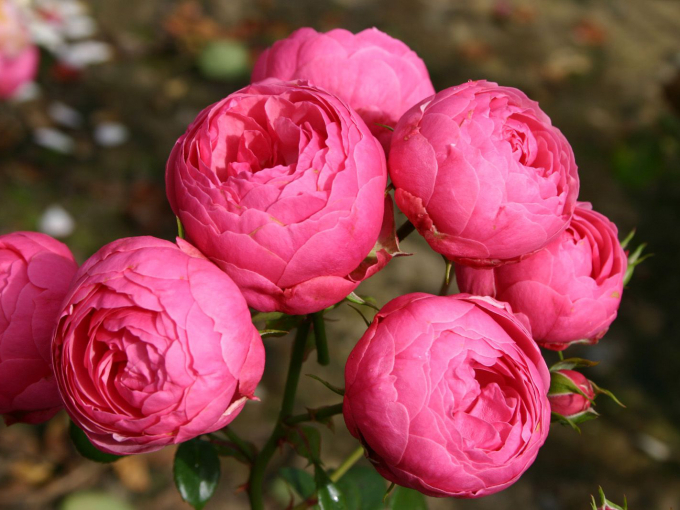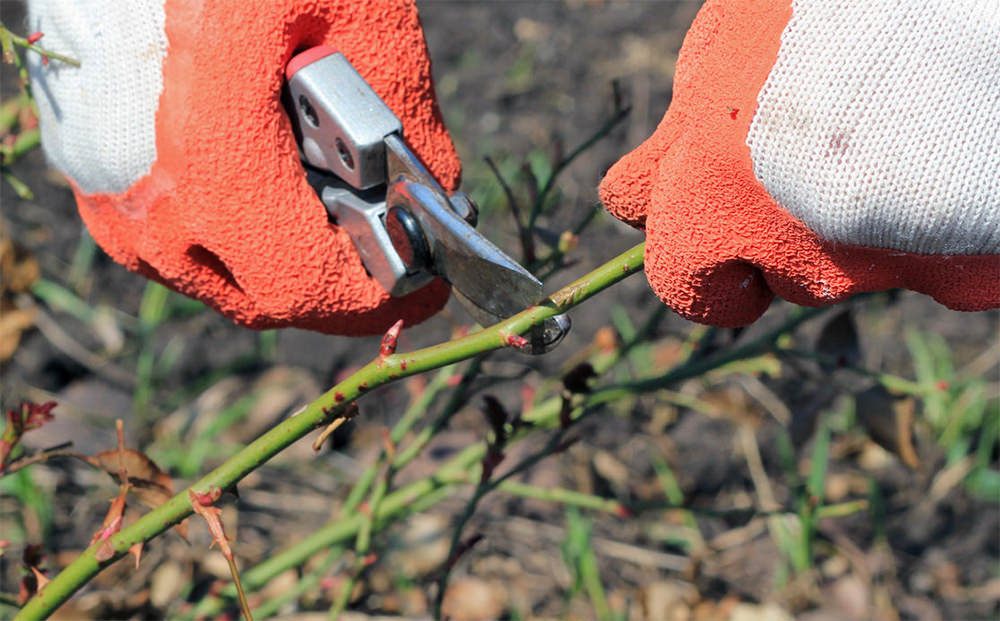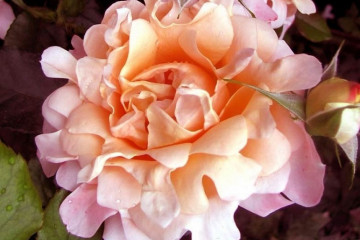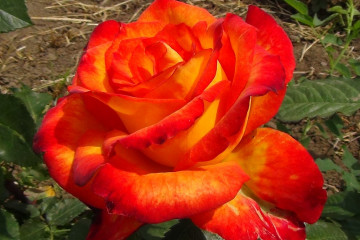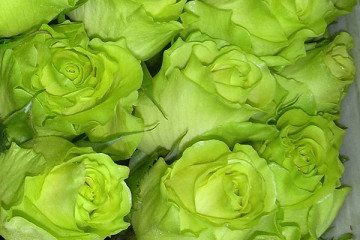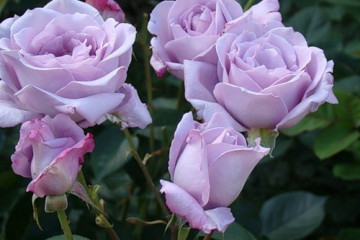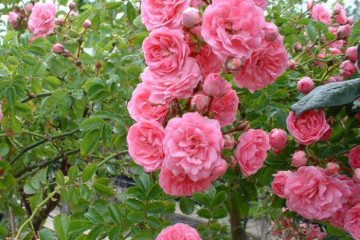Rose Pomponella - characteristics of varietal shrub
Content:
Rosa Pomponella is a reliable, hardy variety. Differs in long-term generous flowering and original addition of dense double flowers. Rose has good resistance to external factors. Suitable for cultivation in mixborders and for solitary planting.
Characteristics of the variety
Floribunda rose Pomponella Cordes was introduced by breeders of the German company Kordes in 2005. By its nature and energy of growth, it can rather be ranked among scrubs (park roses). The variety often outgrows the declared dimensions: width 60 cm, height up to 80 cm.
Description of the Pomponella rose: unpretentious plant, undemanding to soil and care. It blooms profusely, with a short break, from 10 or more buds appear in the clusters. A single flower is of medium size (4-5 cm) and looks like a tight pompom. The aroma is subtle, unobtrusive, it remains even with dried flowers.
Advantages and disadvantages of the variety
Pomponella rose is distinguished by enviable endurance, dense glossy foliage is resistant to diseases. Branched bush, densely leafy. The plant quickly acclimatizes after transplanting, winters well stably.
The pom-pom rose is very decorative at the peak of flowering, producing a large number of simultaneously flowering buds in the clusters. Flowers are not damaged by precipitation.
Among the disadvantages of the variety:
- does not tolerate heat: petals fade and wither;
- by the end of summer, it throws out long shoots, disrupting the harmony of the bush;
- solid pink color, without transitions, may seem uninteresting.
Growing and care
The rose does not require close attention; a novice gardener is able to cope with caring for Pomponella.
Landing
Approximate calendar dates for planting roses in open ground:
- spring: end of April - first half of May;
- autumn: September - early October.
When planting in spring, you should be guided by the weather. It is necessary that the soil warms up evenly and passes the threat of spring frosts. In the fall, it is more difficult to guess with the forecast, usually it takes 2 - 3 weeks for roses to take root and adapt. Pomponella tolerates planting and replanting well, in case of a threat of early frosts, it is recommended to cover the plant.
When choosing a place for planting, you should pay attention to the east and west sides near buildings to provide shade for the rose at noon. You can not plant the plant in places where groundwater is high and in a lowland where rain and melt water accumulates. An ideal place with a slight slope towards the south, protected from strong winds and drafts.
Dense loam is diluted with sand and peat, compost, sod soil and humus are introduced into the sandy soil.
Watering
The plant needs additional watering in the period 2 - 3 weeks after planting. In dry summers, it is recommended to water an adult bush once a week in an amount of 10 - 14 liters of water.
In order for the water to penetrate directly to the root system, and not spread over the surface, a low embankment is made around the bush.
After watering, loosening of the soil is required so that the crust frozen under the sun does not block the access of air to the roots.
Mulching the root area with hay or wood chips will help keep moisture from evaporating.
Top dressing
During the growing season, the use of fertilizers will help to accelerate growth and improve the quality of flowering. It is best to alternate fertilizing with complex and organic fertilizers, this approach allows the plant to better absorb nutrients and trace elements.
Organic fertilizers contain a large amount of nitrogen necessary for the growth of shoots, they are applied only until the middle of summer. Sources of nitrogen for rose:
- compost from plant and food residues;
- rotted manure.
To increase the fertility of the soil, it is recommended to introduce peat.
Mineral complex fertilizers will qualitatively improve flowering and increase the resistance of the rose. The main elements, the lack of which will affect the health and decorativeness of the variety:
- potassium;
- phosphorus;
- calcium;
- magnesium;
- iron.
In addition to compound fertilizers from the store, you can use simpler dressings. They saturate the earth in the form of an infusion or by laying out dry matter in grooves:
- wood ash;
- blood and bone meal;
- inkstone.
Fertilizers can be applied to the root area or by spraying the aerial part of the plant throughout the season.
Pruning
This is one of the main ways to care for a rose bush. In the spring, after removing the winter shelter, the preserved green shoots are shortened to living tissue. The slice should be white. All dried, darkened, with traces of mold and broken branches are cut at an ascending angle 1.5 - 2 cm above a living bud.
To give the bush a vase-like, open shape, a cut is made above the bud growing from the center.
To rejuvenate the bush, they cut out old lignified branches that are not able to fully bloom. Thin lateral and inward-growing shoots are also removed in spring and throughout the season. They do not bloom profusely, obstruct air circulation and take nutrients away from healthy, flowering branches. Faded brushes are removed up to the first quintuple leaf.
Pomponella rooted well by cuttings, an adult self-rooted plant winters and develops as well as on a rosehip rootstock.
Diseases, pests
Pomponella rose is highly resistant to black spot. White powdery mildew may appear on young leaves and at the base of the buds in particularly humid summers. The danger is posed by a severe, poorly curable rose disease - bacterial cancer. Fortunately, it is rare. It can be detected by swelling and nodular growths on the stems, root collar. The plant is usually destroyed.
Rose pests, most often attacking young juicy shoots and buds:
- aphid;
- rose leaf roll;
- spider mite.
You can get rid of the invasion of pests by treating the ground part with insecticidal preparations. Foliar treatment involves abundant wetting of the leaves, not only of the upper plate, but also of the lower part of the leaf.
A spectacular mixborder will turn out if you plant next to pompom roses of another variety, for example, raspberry-red Ascott or lavender-pink Misty Bubbles. Floribunda Pomponella, confident soloist and reliable planting companion, thanks to its abundant flowering before frost. All flower lovers should definitely pay attention to this variety.
